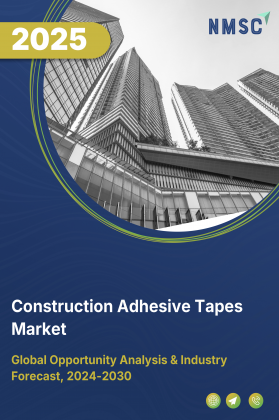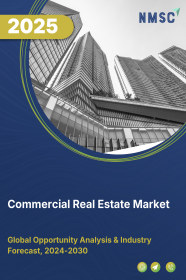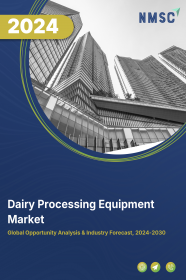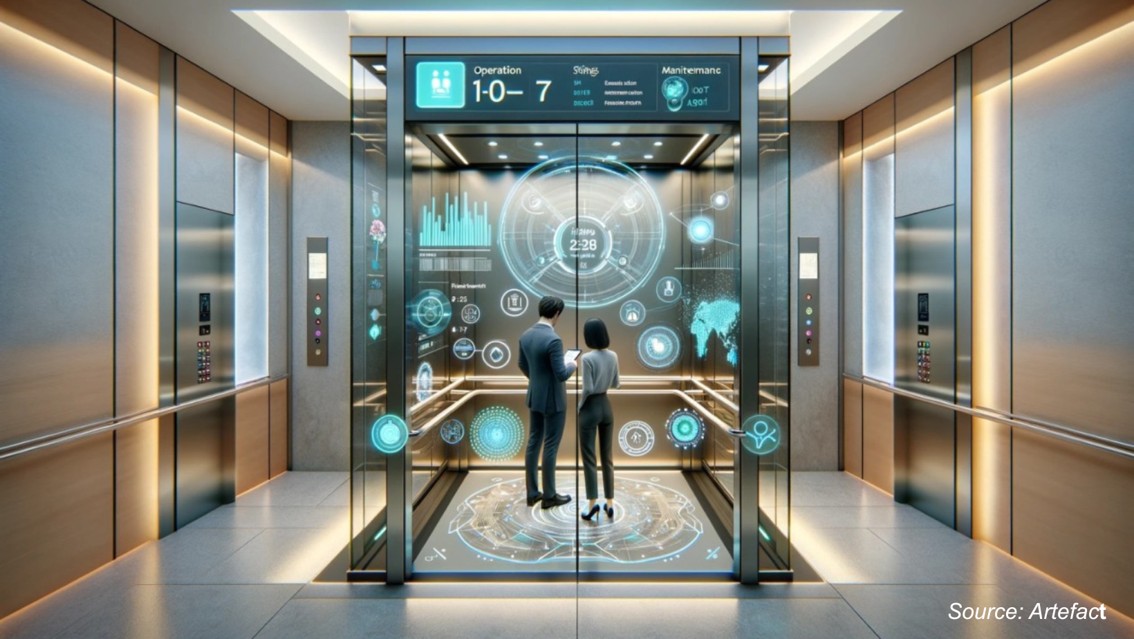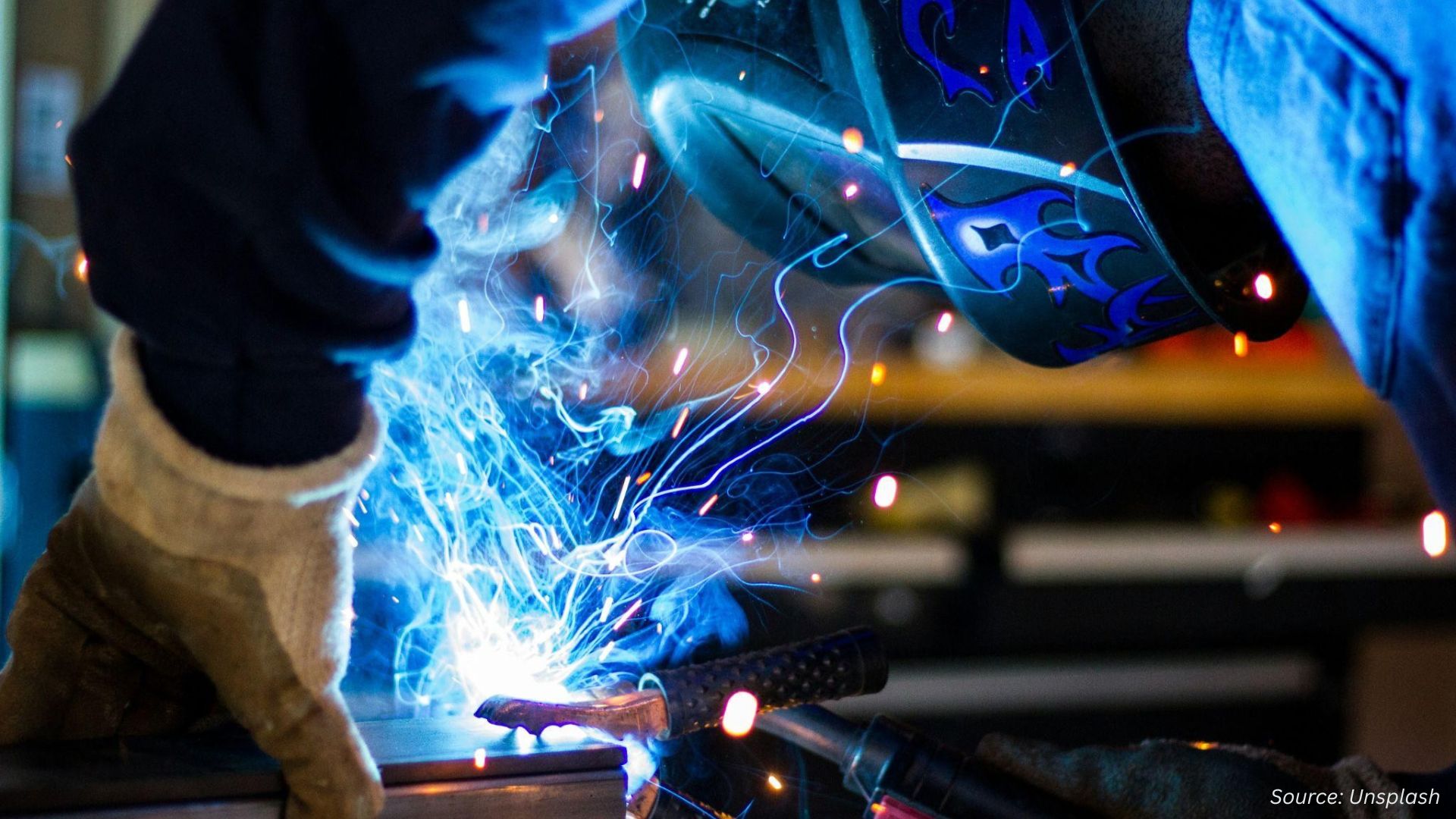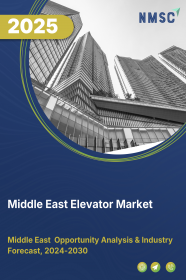
Middle East Elevator Market by Type (Passenger elevator, Freight elevator, and Others), by Technology (Traction, and Hydraulic), by Service (New Installation, Maintenance, and Modernization), by Capacity (Less than 1500 kg, 1500 to 2500 kg, 2501 to 4000 kg, and Others), by Speed (Less than 1 M/S, Between 1 to 4 M/S, and More than 5 M/S), by Deck type (Single Deck, and Double Deck) by Application (Residential, Commercial, and Industrial) - Opportunity Analysis and Industry Forecast, 2024 –2030
Industry: Construction & Manufacturing | Publish Date: 03-Oct-2025 | No of Pages: 316 | No. of Tables: 296 | No. of Figures: 253 | Format: PDF | Report Code : CM1663
Market Definition
Middle East Elevator Market size was valued at USD 1.25 billion in 2023, and is predicted to reach USD 2.38 billion by 2030, at a CAGR of 8.5% from 2024 to 2030.
The elevator industry represents a dynamic sector encompassing the conception, production, installation, and maintenance of elevator systems. From conventional traction elevators to cutting-edge smart solutions, this market offers a diverse array of vertical transportation options tailored to suit the specific requirements of various buildings and infrastructure projects. Key stakeholders within the elevator market include manufacturers, suppliers, contractors, architects, building owners, and facility managers. Manufacturers continually innovate to enhance elevator performance, safety standards, and sustainability practices, while suppliers provide essential components and materials necessary for system assembly.
Furthermore, sustainability considerations such as energy efficiency and material recyclability are increasingly integrated into elevator design and operation, aligning with broader environmental objectives and sustainable building principles. As a result, the elevator market serves as a fundamental cornerstone of vertical mobility, enriching functionality, accessibility, and sustainability in buildings and urban landscapes worldwide.
Government-led Mega-projects and Ambitious Urbanization Strategies are Fueling Unprecedented Demand for New Elevator Installations
The single most significant driver propelling the Middle East elevator market is the sheer scale of government-funded infrastructure development and futuristic urban planning initiatives. Unlike market growth in other regions that might be driven by organic private-sector construction, the Middle East market is supercharged by top-down national strategies like Saudi Vision 2030 and the UAE's various smart city projects. These are not merely construction booms; they involve creating entire new cities (such as NEOM in Saudi Arabia), massive commercial and entertainment hubs, and iconic skyscrapers that push the boundaries of architectural design.
These mega-projects, by their very nature, require a large volume of high-performance vertical transportation solutions. The construction of super-tall towers like the Jeddah Tower and Burj Azizi necessitates the installation of some of the world's fastest and most technologically advanced elevators. Furthermore, the development of integrated smart cities demands interconnected systems, meaning elevators must be part of a larger digital infrastructure. This direct, large-scale government investment creates a sustained, high-volume demand for new installations, providing a stable and predictable project pipeline for major global elevator manufacturers and ensuring robust market growth for the foreseeable future.
The Accelerated Adoption of Smart Technology, AI, and Iot is Transforming Elevator Systems into Intelligent Assets
A powerful secondary driver is the region's rapid embrace of advanced technology, which is fundamentally redefining the role of elevators in modern buildings. There is a strong and growing demand for "smart elevators" that are integrated with the Internet of Things (IoT), artificial intelligence (AI), and advanced analytics platforms. This trend goes far beyond simple convenience; it is about turning elevators into intelligent, data-generating assets that enhance building efficiency and safety.
Specifically, IoT integration allows for real-time remote monitoring and predictive maintenance, where potential faults are identified by AI algorithms before they lead to breakdowns, drastically reducing downtime and maintenance costs. Smart control systems, such as destination dispatch, optimize passenger flow in high-traffic buildings, minimizing wait times. In the post-pandemic era, features like touchless controls and advanced air purification systems have also become highly sought after. For the premium commercial and residential properties common in the Middle East, offering these state-of-the-art technological features is a key differentiator, making the adoption of smart elevator technology a critical driver for both new installations and modernization projects.
High Installation and Maintenance Costs, Compounded by a Shortage of Skilled Technicians for Advanced Systems, Pose a Significant Barrier
A primary factor restraining the market's full potential is the combination of high capital expenditure for advanced elevator systems and a persistent shortage of skilled labor required for their installation and maintenance. The sophisticated smart elevators that are in high demand—featuring complex electronics, software, and network connectivity—are significantly more expensive to purchase and install than traditional models. This high initial investment can be a deterrent for smaller-scale developers or for projects with tighter budget constraints.
More critically, the maintenance of these technologically advanced systems requires a new breed of technician with expertise in software, electronics, and data analysis, not just mechanics. There is a notable skills gap in the region for this specialized talent, which leads to higher service costs and longer response times for repairs. This scarcity can impact the total cost of ownership over the elevator's lifecycle and create operational risks for building owners, potentially slowing the widespread adoption of the latest technologies, particularly outside of prime, high-budget projects.
The Region's Massive Investment in Renewable Energy Creates a Strategic Opportunity for Energy-efficient and Solar-powered Elevator Solutions
A substantial opportunity for the elevator market lies in aligning with the Middle East's aggressive push towards renewable energy, particularly solar power. As nations across the region invest billions in developing vast solar farms and integrating green energy into their national grids, there is a growing demand for all building systems to become more energy-efficient. This creates a compelling market for elevators equipped with regenerative drives, which capture kinetic energy generated during braking and convert it into electricity that can be fed back into the building's power supply.
This opportunity extends beyond simple efficiency. There is an emerging potential for developing and deploying elevators that can be partially or fully powered by dedicated solar panel installations on building rooftops. In a region with abundant sunlight, this offers a powerful value proposition: reduced operational electricity costs, a lower carbon footprint, and enhanced energy resilience for the building. For elevator manufacturers, developing and marketing these "green" vertical transportation solutions allows them to position their products not just as a utility, but as an integral component of a sustainable and smart building's energy management ecosystem, tapping directly into the region's core strategic goals.
Competitive Landscape
The Middle East elevator market comprises various market players, such as Otis Worldwide Corporation, KONE Corporation, Schindler Group, TK Elevator, Mitsubishi Electric, Toshiba Elevator & Building Systems, Hyundai Elevator, Hitachi, Fujitec, Gulf Elevators & Escalators Co, Atlas Elevators Factory LLC, Alfa Elevators and others.
Middle East Elevator Market Key Segments
By Type
-
Passenger elevator
-
Freight elevator
-
Others
By Technology
-
Traction
-
Machine Room [MR] Traction
-
Machine Roomless [MRL] Traction
-
-
Hydraulic
By Service
-
New Installation
-
Maintenance
-
Modernization
By Capacity
-
Less than 1500 kg
-
1500 to 2500 kg
-
2501 to 4000 kg
-
More than 4000 kg
By Speed
-
Less than 1 M/S
-
Between 1 to 4 M/S
-
More than 5 M/S
By Deck Type
-
Single Deck
-
Double Deck
By Designation Control
-
Smart
-
Conventional
By Door Type
-
Automatic
-
Manual
By Application
-
Residential
-
Low Rise: 10 floors
-
Mid Rise: 11-30 floors
-
High Rise: above 30 floors
-
Villa/home
-
-
Commercial
-
Airport
-
Hotel & Hospitality
-
Leisure and Education
-
Marine & Port Facilities
-
Medical & Healthcare
-
Multiuse Buildings (Mixed-Use)
-
Retail & Shopping Centers
-
Public Transportation Hubs
-
Office Buildings
-
Low Rise: 10 floors
-
Mid Rise: 11-30 floors
-
High Rise: above 30 floors
-
-
-
Industrial
By Region
-
Middle East
-
Saudi Arabia
-
United Arab Emirates (UAE)
-
Israel
-
Qatar
-
Kuwait
-
Oman
-
Other Countries
-
Key Players
-
Otis Worldwide Corporation
-
KONE Corporation
-
Schindler Group
-
TK Elevator
-
Mitsubishi Electric
-
Toshiba Elevator & Building Systems
-
Hyundai Elevator
-
Hitachi
-
Fujitec
-
Gulf Elevators & Escalators Co
-
Atlas Elevators Factory LLC
-
Alfa Elevators
Report Scope and Segmentation
|
Parameters |
Details |
|
Market Size in 2023 |
USD 1.25 Billion |
|
Revenue Forecast in 2030 |
USD 2.38 Billion |
|
Growth Rate |
CAGR of 8.5 % from 2024 to 2030 |
|
Analysis Period |
2023–2030 |
|
Base Year Considered |
2023 |
|
Forecast Period |
2024–2030 |
|
Market Size Estimation |
Billion (USD) |
|
Growth Factors |
|
|
Companies Profiled |
15 |
|
Market Share |
Available for 10 companies |
|
Customization Scope |
Free customization (equivalent up to 80 working hours of analysts) after purchase. Addition or alteration to country, regional, and segment scope. |
|
Pricing and Purchase Options |
Avail customized purchase options to meet your exact research needs. |




















 Speak to Our Analyst
Speak to Our Analyst



